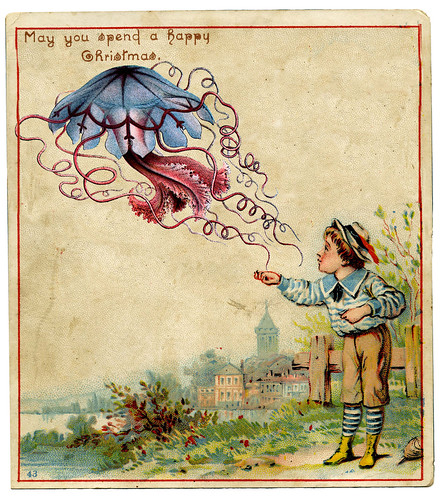H.P. Lovecraft, the opening paragraphs of “Old England and the Hyphen” (1916):
Of the various intentional fallacies exhaled like miasmic vapours from the rotting cosmopolitanism of vitiated American politics, and doubly rife during these days of European conflict, none is more disgusting than that contemptible subterfuge of certain foreign elements whereby the legitimate zeal of the genuine native stock for England’s cause is denounced and compared to the unpatriotic disaffection of those working in behalf of England’s enemies. The Prussian propagandists and Irish irresponsibles, failing in their clumsy efforts to use the United States as a tool of vengeance upon the Mistress of the Seas, have seized with ingenious and unexpected eagerness on a current slogan coined to counteract their own traitorous machinations, and have begun to fling the trite demand “America first” in the face of every American who is unable to share their puerile hatred of the British Empire. In demanding that American citizens impartially withhold love and allegiance from any government save their own, thereby binding themselves to a policy of rigid coldness in considering the fortunes of their Mother Country, the Prusso-Hibernian herd have the sole apparent advantage of outward technical justification. If the United States were truly the radical, aloof, mongrelised nation into which they idealise it, their plea might possibly be more appropriate. But in comparing the lingering loyalty of a German-American for Germany, or of an Irish-American for Ireland, with that of a native American for England, these politicians make their fundamental psychological error.
England, despite the contentions of trifling theorists, is not and never will be a really foreign country; nor is a true love of America possible without a corresponding love for the British race and ideals that created America. The difficulties which caused the severance of the American Colonies from the rest of the Empire were essentially internal ones, and have no moral bearing on this country’s attitude toward the parent land in its relations with alien civilisations. Just as Robert Edward Lee chose to follow the government of Virginia rather than that of the Federal Union in 1861, so did the Anglo-American Revolutionary leaders choose local to central allegiance in 1775. Their rebellion was in itself a characteristically English act, and could in no manner annul the purely English origin and nature of the new republic. American history before the conflict of 1775-1783 is English history, and we are lawful heirs of the unnumbered glories of the Saxon line. Shakespeare and Milton, Dryden and Pope, Young and Thomson, Johnson and Goldsmith, are our own poets; William the Conqueror, Edward the Black Prince, Elizabeth, and William of Nassau’ are our own royalty; Crecy, Poictiers, and Agincourt are our own victories; Lord Bacon, Sir Isaac Newton, Hobbes, Locke, Sir Robert Boyle, and Sir William Herschel are our own philosophers and scientists; what true American lives, who would wish, by rejecting an Englishman’s heritage, to despoil his country of such racial laurels? Let those men be silent, who would, in envy, deny to the citizens of the United States the right to cherish and revere the ancestral honours that are theirs, and to remain faithful to the Anglo-Saxon ideals of their English forefathers!



